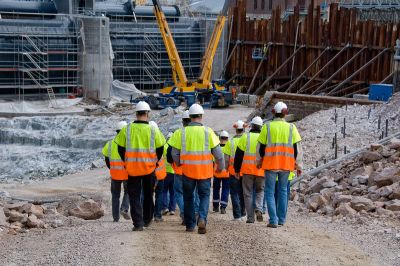You don’t need to harass your employees into improving safety. Once they own it, they will do it willingly.

When professional athletes buy-in to the team’s vision for success, they become unstoppable. An excellent coach who touches his players one-on-one each day can help the players buy-in to the team vision and plan. When the coach gets buy-in from his players, they are more willing to do the right things more often and are less likely to do the wrong things. After all, it’s a team and every team member has a role and importance.
If you want your crew to buy-in to safety, you are going to have to engage each member of the team in one-on-one conversations. The key word here is conversation. That means two-way communication. You can’t just bark orders or enforce rules and expect to build a championship team of safety performers. No, you have to get each member of the team to buy-in to the safety program. Once they buy-in, the need for enforcement disappears.
Here are 5 things that employees need before they are every going to be able to buy-in to the safety program:
1Need to believe they can do better. Safety isn’t supposed to make you afraid or sad. That’s why injury stories and gruesome videos don’t inspire better safety performance long-term. They only achieve short-term compliance. Safety is supposed to increase an employee’s confidence and ability to make good decisions. Before anyone can do better, they have to believe that they can do better. That’s where safety coaching can play a huge role. Build their belief that they can do better, alone and as a team, and they will begin to do better.
2Need to be just as important as anyone else. Once upon a time, workers (Baby Boomers) feared for their jobs. Managers could threaten to fire them and it would inspire better performance. But it happened out of fear. Being told they could be replaced made them feel as though they had to perform better to be thought of better. Today though, nobody wants to feel their contribution is less valuable than their co-workers’. And when you’re talking about safety, is the loss any greater when a manager gets hurt instead of a front-line worker. No, safety is the great equalizer. Injury doesn’t happen based on tenure, experience or position. That means every person is equal in the eyes of safety.
3Need to look forward to evaluations. It starts in school - looking forward to finding out your grades and test scores. You want to know how you’re doing, what you’re doing well and what little things you could improve on. Anyone who doesn’t want to know doesn’t care about where they work. It’s impossible to care about where you work but not care about your own contribution. You can’t improve what you don’t know. Annual performance reviews are a joke - especially in safety. Safety coaching needs to happen every day. Feedback needs to happen daily. There should also be the chance for team members to give feedback as well as receive it. Allow them a chance to tell you what’s working and what’s not.
4Need to be part of the greater good. Job-seekers spend at least an hour on a potential employer's web site assessing the Corporate Responsibility Statement. That's before they decide whether to apply to work there. Today’s young workers don’t just want a job. They want to feel like the work means something and that their contribution matters. Employees must have input on what they are there to do and the crew's safety mission statement. You can immediately take ownership of something you had a hand in creating. So let your employees decide what the greater good is. Let them decide their own safety mission statement. They should be able to tell you how they met the mission today, every day.

5Need to become an owner. If you want an example of how this works, watch how people treat a rental car versus how they treat their own. If you own it, you look after it (most times this is true). When people take ownership (buy-in) of the safety program, they don’t need to have safety enforced any longer. The need for enforcement goes away. A sense of ownership of the safety program replaces it. They look out for the welfare of their co-workers and the performance of the team. You don’t need to harass your employees into improving safety. Once they own it, they will do it willingly.
Of course, if you’re used to enforcing rules, then this discussion will seem foreign to you. Well, you will change … eventually. Or you will be replaced. This is the new way of safety.
Kevin Burns is a management consultant, safety speaker and author of "The Perfect Safety Meeting." He delivers engaging and entertaining keynote safety presentations for everyone: from front-line staff to senior management. He helps people see the light when it comes to buying-in to the safety program.


